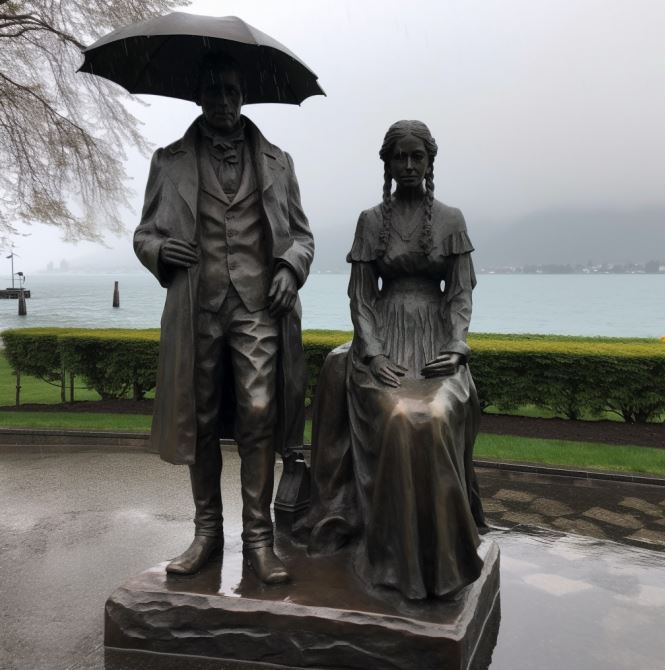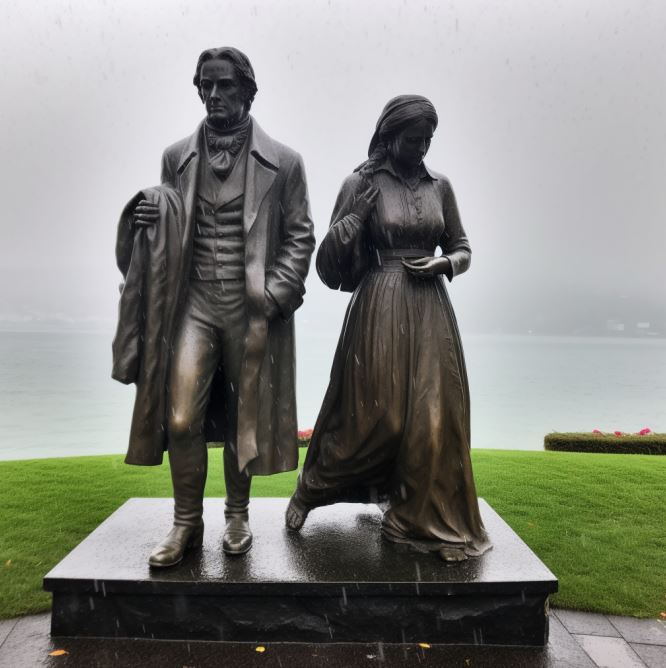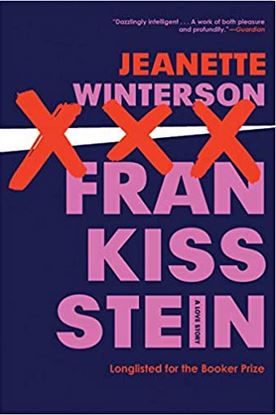Book Review: Frankissstein, by Jeanette Winterson
ser·en·dip·i·ty, noun – the occurrence and development of events by chance in a happy or beneficial way.
Following my recent review of two books by Jeanette Winterson, I ordered a copy of her 2019 novel Frankissstein from the library. It was serendipitous, given my current fascination with AI and background in the computer industry. Winterson’s story begins with the incubation of Mary Shelley’s novel Frankenstein on the shores of Lake Geneva in 1816 with her future husband the poet Shelley, his friend Byron, and his lover, Claire. Trapped indoors by endless rain, the nineteen-year-old Mary is inspired to write a story about a scientist who creates a new life-form. So far, so factual:
Shelley traveled through Europe in 1815, moving along the river Rhine in Germany, and stopping in Gernsheim, 11 miles away from Frankenstein Castle, where, two centuries before, an alchemist had engaged in experiments. She then journeyed to the region of Geneva, Switzerland, where much of the story takes place. Galvanism and occult ideas were topics of conversation for her companions, particularly for her lover and future husband Percy Bysshe Shelley. In 1816, Mary, Percy, and Lord Byron had a competition to see who could write the best horror story. After thinking for days, Shelley was inspired to write Frankenstein after imagining a scientist who created life and was horrified by what he had made.
Wikipedia
This is but one theme. The story weaves details Shelley’s life – up to an including the deaths of her husband and Byron, with the Britain of the early 21st century, where Ry Shelley, a young transgender doctor falls in love with Victor Stein, a leading computer scientist championing AI and carrying out mysterious experiments in a network of tunnels beneath Manchester. Meanwhile, sleazy entrepreneur Ron Lord looks to make his fortune launching a new generation of sex dolls for lonely men.
Winterson’s genius is not just the obvious foreshadowing of AI that the early 19th century novel explored, but in the rich series of hints of the shape of things to come which, in 2019, perfectly encapsulates today’s debates about ChatGPT and other forms of AI:
She said, Machines that mimic a mind! Oh! Suppose such a thing should happen one day! Yes! Yes! Imagine, gentlemen, how it will feel if someone invents a LOOM that writes poetry….A POETICAL loom! An abacus of words. A rote poet…
p 136
But look at this! said Ada [Lovelace], lying flat on the floor and retrieving a piece of paper from underneath the contraption with castors that is to change the world. [Babbage’s Analytical Engine]
Yes! Look at this. It will amuse you…It purports to be a letter from Babbage about his latest invention: THE NEW MECHANICAL PATENT NOVEL-WRITER.
I perused the cartoon, and spoofs of testimonials from Mr Bulwer-Lytton and other famous writers:
I am now able to complete a 3-vol novel of the usual size, in the short space of 48 hours, whereas, before, at least a fortnight’s labour was requisite for that purpose…
p. 321
Poetry
As in her other novels, Winterson’s prose has wonderful poetic passages. She writes of the hopes and fears lovers feel and the fractured possibilities of other lives:
He says, Imagine us. In another world. Another time. Imagine us: I am ambitious. You are beautiful. We marry. You are ambitious, I am unstable. We live in a small town. I am neglectful. You have an affair. I am a doctor. You are a writer. I am a philosopher, you are a poet. I am your father. You run away. I am your mother. I die in childbirth. You invent me. I can’t die. You die young. We read a book about ourselves and wonder if we have ever existed. You hold out your hand. I take it in mine. You say, this is the world in little. The tiny globe of you is my sphere. I am what you know. We were together once and always. We are inseparable. We can only live apart.
p. 161
From the intensely personal to the social and political, the novel straddles the history of computing (Byron’s daughter Ada Lovelace, Charles Babbage, Alan Turning, Bletchley Park); the moral dilemma and mechanisms of sexbots; dehumanized life of the Industrial Revolution in Manchester; the Peterloo Massacre; women’s rights and lived experience, starting with Mary’s mother, Mary Wollstonecraft, and her own experience of losing newborns; and, most succinctly, the experience of being trans:
I’m trans and that means a lifetime of hormones. My life will likely be shorter, and it’s likely that I will get sicker as I get older. I keep my body maleness intact with testosterone because my body knows it wasn’t born the way I want it to be. I can change my body but I can’t change my body’s reading of my body. The paradox is that I felt in the wrong body but for my body it was the right body. What I have done calms my mind and agitates my chemistry. Few people know what it’s like to live this way.
p. 310
Future Imperfect
A protagonist who is living a paradox signifies the larger paradoxes of the past and potential futures:
- Rock-star poets who abuse their partners even as they pen immortal lines.
- Crass purveyors of sexbots who serve the needs of the lonely, elderly, and isolated.
- AI capabilities that threaten our concept of humanity, as problematic as Shelley’s early 19th century imaginative creation.
- A steampunk assessment of a future computing, limited by Victorian technology:
Imagine, said Ada, it might be possible to build the machine as a city and live inside it…
Would there be more than one machine? I said.
The scale would make it impractical to have more than one, said Ada. And, as it is steam-powered, it would require a great deal of coal.
p.325
Funny, inventive, entertaining. A great read. And, guess what, ChatGPT nails it:
While Midjourney pictures it:
/Imagine Mary Shelley and Frankenstein on the shores of Lake Geneva in the rain –v 5





3 Comments so far
Leave a comment
Provocative review of a timely imaginative book. Consciousness of one’s own death seems to be the only remaining definition of humanness left, although Winterson probably explores that as well.
By Brady Boyd on 04.12.23 11:09 pm
Indeed, the question of the consciousness of our death is a recurring theme in the novel, perhaps nowhere more disturbingly addressed than on p. 223:
This is described elsewhere in the scientific literature.
By Theboss on 04.13.23 3:26 pm
More serendipity, or is it synchronicity, in the example used by Cal Newport in his article in the current edition of The New Yorker magazine ‘What Kind of Mind Does ChatGPT Have?‘
By Theboss on 04.14.23 10:08 am
Leave a comment
Line and paragraph breaks automatic, e-mail address never displayed, HTML allowed:
<a href="" title=""> <abbr title=""> <acronym title=""> <b> <blockquote cite=""> <cite> <code> <del datetime=""> <em> <i> <q cite=""> <s> <strike> <strong>